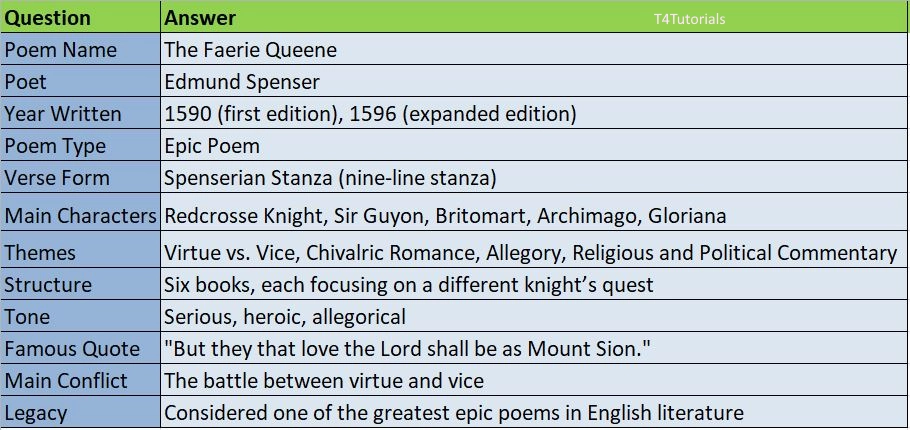Summary:
The Faerie Queene is an epic poem written by Edmund Spenser, first published in 1590 and expanded in 1596. It tells the story of a series of knights, each representing a different virtue, who undertake heroic quests to uphold righteousness in a mythical world. The central figure, Redcrosse Knight, represents holiness, and his journey is an allegorical representation of the Christian struggle for salvation. Throughout the poem, the knights confront various temptations and challenges that symbolize the virtues and vices of human nature. The poem also explores themes of chivalry, religious righteousness, and political allegory, as Spenser subtly addresses the tensions of the Protestant Reformation in England. The poem is divided into six books, each focusing on a particular knight’s quest. While Redcrosse Knight’s tale of holiness is central, other knights such as Sir Guyon, who represents temperance, and Britomart, who represents chastity, also undertake their respective quests. Through allegory and detailed descriptions, Spenser creates a vivid portrayal of an idealized world where virtue triumphs over vice, and the knights emerge victorious in their endeavors.
10
Score: 0
Attempted: 0/10
Subscribe
| Question | Answer |
| Poem Name | The Faerie Queene |
| Poet | Edmund Spenser |
| Year Written | 1590 (first edition), 1596 (expanded edition) |
| Poem Type | Epic Poem |
| Verse Form | Spenserian Stanza (nine-line stanza) |
| Main Characters | Redcrosse Knight, Sir Guyon, Britomart, Archimago, Gloriana |
| Themes | Virtue vs. Vice, Chivalric Romance, Allegory, Religious and Political Commentary |
| Structure | Six books, each focusing on a different knight’s quest |
| Tone | Serious, heroic, allegorical |
| Famous Quote | “But they that love the Lord shall be as Mount Sion.” |
| Main Conflict | The battle between virtue and vice |
| Legacy | Considered one of the greatest epic poems in English literature |